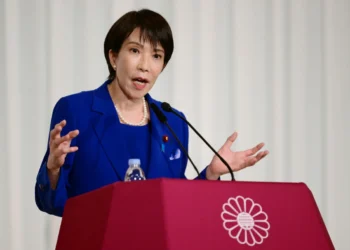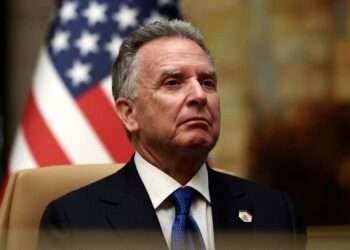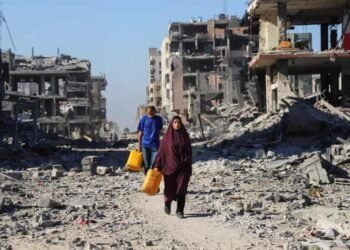After enjoying a period of calm, Iran is once again experiencing an alarming rise in COVID-19 infections, largely fuelled by the spread of the Omicron variant across the country.
After 47 days, the country’s colour-coded COVID-19 map showed red again on Wednesday, January 26, 2022, as Ardakan County in the central province of Yazd was classified with the highest level of alarm.
Most cities across the country still have the lowest (colour-coded as blue), but the number of orange areas has increased to eight with 114 cities classified yellow, representing low-risk areas.
Daily registered cases jumped from 700 in early January to more than 9,000 on Tuesday, January 25, 2022.
But the number of fatalities recorded in 24 hours remains in the lower double-digits range amid a widespread vaccination campaign, which is far below the 709 peak figure recorded in late August 2021, when the Delta variant was dominant across the country. As of that time, the country had limited access to vaccines.
Iran – Most hit by the Pandemic
Iran, however, remains the country worst affected by the pandemic in the Middle East, having officially registered more than 132,000 deaths and 6.2 million cases, which health officials say are likely to be much higher.
The country reported its first Omicron infection on December 19, 2021. On Monday, January 24, 2022, officials reported a total of 3,466 confirmed cases of the fast-spreading variant.
The recent spike in infections comes as Iran is preparing to hold a 10-day celebration over the anniversary of the country’s 1979 Islamic revolution, starting from February 1, 2022.
While last year’s rallies were held using only cars and motorcycles, officials say they want to organise in-person events this time around.
The country began implementing “smart protocols” from early December 2021, to allow nearly all activities and only impose a number of restrictions on adults who were unvaccinated against COVID-19, up to six million people, according to the Iran Health Ministry.
A Call to Action
Health officials are now sounding the alarm over the sixth wave of infections, calling on the population to better adhere to health protocols and get vaccinated.
Head of the Scientific Committee of the National Anti-coronavirus Task Force, Hamidreza Jamaati, urged people to wear face masks.
“It’s our emphatic suggestion that in the short weeks-long time left to the next coronavirus peak, people complete their vaccination so they will face limited threats.”
Head of the Scientific Committee of the National Anti-coronavirus Task Force – Hamidreza Jamaati
The way forward
On Tuesday, January 25, 2022, Interior Minister Ahmad Vahidi warned that some restrictions may be reinstated if the situation worsens, without naming any specific measures.
According to the latest health ministry figures released on Tuesday, January 25, 2022, more than 60 million of Iran’s 85-million population has received at least one dose of a vaccine, with close to 54 million getting both doses.
Booster shots are now available to all Iranians over 18 years, but only about 15 million people have so far received them, even as officials regularly speak of the importance of a third dose.
One reason for the low uptake is that some Iranians, having previously been injected with China’s Sinopharm vaccine as the only widely available option at the time, are now waiting for imports of other options, especially the AstraZeneca vaccine.
The way it is, officials are expanding the country’s nationwide vaccination campaign.
On Wednesday, January 26, 2022, the health ministry announced plans to vaccinate about eight million children aged nine to 12.
Vaccinations are voluntary and will be done only with the consent of parents.
Other available support systems
Homegrown jabs have also been playing a stronger role in the inoculation drive.
The COVIran Barekat jab is a widely available option, while others include joint productions, such as the Soberana 02 and its booster, Soberana Plus, known as Pasto-Covac and Pasto-Covac Plus in Iran, which was developed by Cuba, and another, SpikoGen in Australia.
READ ALSO: Olympics 2022: Organisers Ease Covid Testing Rules Amid Case Rise






















